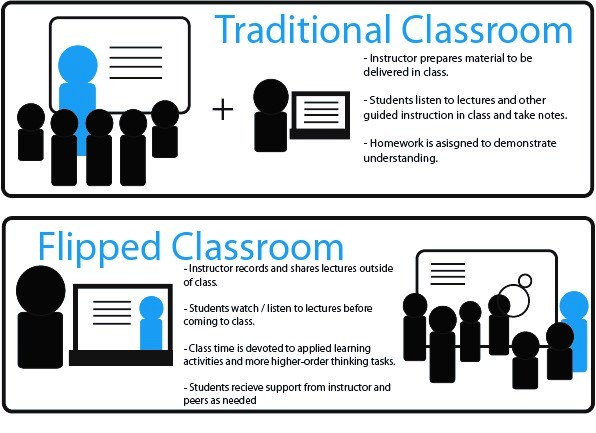Flipped Classroom
1. What is a Flipped Classroom
The main reason, perhaps the only reason for the flipping of the classroom is to give more time for learning, and this is the main shift that we see because flip is gaining popularity over content areas. In addition, a good flipped classroom should be like any other where effective learning happens. The flipped classroom is not the ultimate solution as it is allows productive class time and various forms of instruction.
Many of flipped class discussions step back from the traditional form of
lecture. While some lessons are better as traditional lecture forms, others
will be more suitable as flipped a flipped form. The best pedagogical strategy
depends on learning culture at the educational institution and classroom
environment. The decision to reverse classes means provision of constructive learning environment for students.
Effective flipped classes have many of following features:
- Discussions are led by learners who
present and expand external content.
- These
discussions usually reach a higher degree of critical thinking.
- Collaboration
is fluent, when students go through a variety of simultaneous discussions,
depending on their needs and interests.
- Content
and context are the same importance because it relates to real-world scenarios.
- Students
are challenging each other on content issues.
- Student-led
learning and collaborative learning forms spontaneously.
- Students
acquire ownership of the material and use their knowledge to lead each other
without the teacher's encouragement.
- Students
ask questions, explore them and have the freedom to overcome the core
curriculum.
- Students
are actively involved in critical thinking and problem solving.
- Students from passive recipient change to active
learners.
